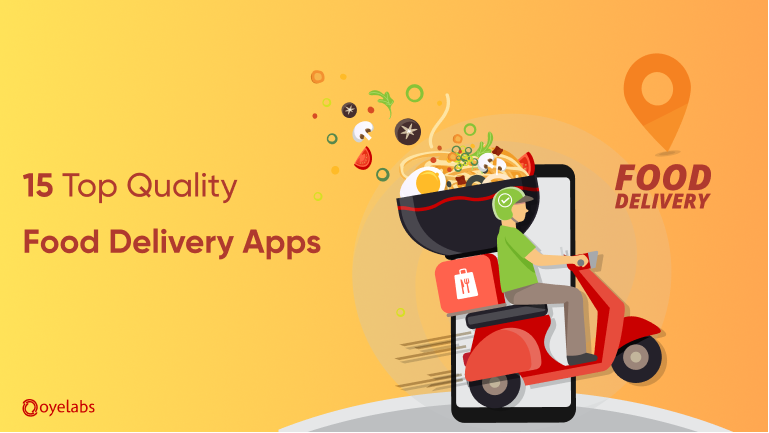The food delivery industry has seen rapid expansion in the past few years, driven by the increasing demand for effortless on-demand services. With platforms like UberEats and DoorDash transforming the way people request meals, the focus has shifted to developing innovative food delivery apps. These apps provide users the option to order food from their preferred restaurants and have it brought right to their doorstep. For companies, the challenge is to utilize technology to enhance delivery operations and ensure a smooth user journey.
Building the Perfect Food Delivery App
Developing a profitable food delivery app requires a deep insight of the market trends and operational strategies that dominate the sector. Whether creating a comprehensive platform or focusing on niche markets like ghost kitchens or cloud kitchens, the app’s features needs to serve to both users and restaurants. Essential elements such as order tracking, efficiency improvement, and customer satisfaction indicators play a vital role in ensuring customer loyalty.
Restaurant Delivery Partnerships: A Winning Strategy
Eateries are increasingly forming collaborations with delivery platforms to expand their customer reach. These partnerships assist restaurants provide to a wider audience while reducing the challenges of managing their own delivery services. The effectiveness of such alliances hinges upon technology integration, which boosts the app usability and improves the user satisfaction. Through these collaborations, restaurants can boost brand loyalty and ensure that they stay competitive in a crowded market.
How KPIs Drive Food Delivery Profitability
For any business, knowing its key performance indicators (KPIs) is essential to maintaining financial health. In the food delivery industry, KPIs such as delivery time, order accuracy, and user happiness are essential. Tracking and optimizing these KPIs enables delivery services to provide a better customer experience. Moreover, keeping an eye on profitability aids companies streamline operations, reduce delivery fees, and improve overall effectiveness.
Customer Satisfaction and User Retention Strategies
A significant factor in the growth of delivery apps is their capacity to keep customers through excellent customer service. Offering quick service and addressing customer reviews quickly can assist companies enhance their service offerings. In addition, implementing rewards systems and offering incentives like free delivery can increase user retention. Customer satisfaction can be further strengthened by ensuring quality assurance and offering a seamless processing system.
The Role of Technology in Food Delivery
Technology is at the core of modern food See What’s Possible delivery solutions, helping companies refine their operations and deliver a smooth customer experience. From app creation to real-time delivery tracking systems, technology has a significant role in the growth of delivery platforms. The use of data analytics to analyze customer demographics and preferences allows delivery services to offer customized experiences, further enhancing user engagement.
Competitive Analysis in the Food Delivery Market
The delivery sector is highly competitive, with numerous players competing for market share. Conducting a market evaluation allows companies to assess their standing in the market and spot opportunities for expansion. Delivery platforms must stand out by offering unique features such as virtual restaurant options, fast delivery times, or specialized cuisine options. Understanding sector dominance and customer actions enables companies to tailor their services and remain ahead of the rivals.
The Impact of the Pandemic on Food Delivery Services
The global health crisis has had a profound impact on the food delivery industry, accelerating Effective Pricing Strategies its expansion as consumers turned to delivery services due to social distancing guidelines. The change has emphasized the necessity of digital transformation in the food industry, with restaurants quickly embracing e-commerce platforms and delivery apps. As the world adjusts to new routines, food delivery businesses must continue innovating to meet changing consumer demands and secure market expansion.
Investing in Food Delivery Startups
The delivery sector presents plenty of entrepreneurial chances, with investors eager to backing companies that offer innovative solutions. From creating UberEats clones to developing niche delivery apps, entrepreneurs have a variety of paths to explore. Investors seek out strong operation plans and the capacity to grow, particularly in areas like delivery network optimization, user experience (UX), and tech integration. By focusing on these areas, startups can attract significant investments and establish themselves in the industry.
Enhancing Food Delivery Service Profitability and Expansion
Growing a food delivery business demands a strong base built on market penetration, pricing strategies, and unique offerings. As regional platforms expand, businesses should concentrate on establishing a dependable logistical system and ensuring quality standards. Furthermore, widening the menu options, forming new restaurant partnerships, and integrating advanced technology in food delivery will drive further growth. By constantly enhancing delivery times and guaranteeing high user happiness, companies can maintain a competitive edge and increase revenue generation.
These topics provide a comprehensive understanding of the service landscape, with a emphasis on key areas that drive the industry forward. Whether you’re a new company or an established company, focusing on these areas will help you succeed in the challenging world of food delivery.
